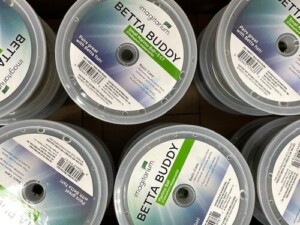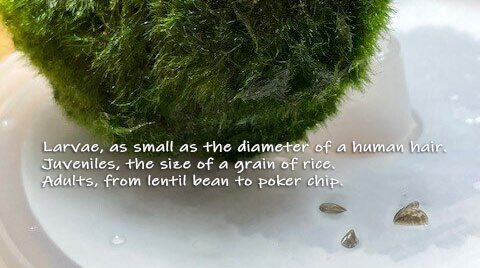The Idaho State Department of Agriculture’s (ISDA) Invasive Species Program announced on March 4th that viable zebra mussels had been found in Marimo moss balls, commonly sold for use in aquariums. Working in coordination with state and federal partners, they identified retail distribution, collected affected products, and ensured the product’s proper disposal.
Read ISDA’s March 11, 2021 press release.
 While agencies like ISDA continue their vigilance, resident consumers in the Hayden Lake Watershed and throughout Idaho have a role to play. If you own an aquarium or water garden, check the manufacturer of your aquarium products and keep a lookout for zebra mussels. If you own a suspect product, dispose of it properly.
While agencies like ISDA continue their vigilance, resident consumers in the Hayden Lake Watershed and throughout Idaho have a role to play. If you own an aquarium or water garden, check the manufacturer of your aquarium products and keep a lookout for zebra mussels. If you own a suspect product, dispose of it properly.
 Other actions you can take to prevent the spread of invasive species:
Other actions you can take to prevent the spread of invasive species:
Destroy! Don’t Dump
 While agencies like ISDA continue their vigilance, resident consumers in the Hayden Lake Watershed and throughout Idaho have a role to play. If you own an aquarium or water garden, check the manufacturer of your aquarium products and keep a lookout for zebra mussels. If you own a suspect product, dispose of it properly.
While agencies like ISDA continue their vigilance, resident consumers in the Hayden Lake Watershed and throughout Idaho have a role to play. If you own an aquarium or water garden, check the manufacturer of your aquarium products and keep a lookout for zebra mussels. If you own a suspect product, dispose of it properly.
- DO NOT dispose of moss balls in drains, waterways, or gardens. Moss balls must be destroyed and disposed of in a sealed container in the trash.
- DESTROY moss balls by freezing, boiling, or submerging in chlorine bleach or undiluted white vinegar.
- DISPOSE of moss balls and any packaging in a sealed plastic bag in the trash. If vinegar, boiling water, or bleach was used, the liquid can be disposed of down a household drain but never down a storm drain where it could enter and damage local waterways.
- DRAIN the aquarium, again into a household drain, not on the ground or down a storm drain. Clean the aquarium using either a hot-water or disinfection method, keeping manufacturer recommendations in mind.
Why are Zebra Mussels a Problem?
According to the USFWS, “zebra mussels are among the most devastating invasive species in North America. When they become established in an environment, they alter food webs and change water chemistry, harming native fish, plants, and other aquatic life. They clog pipelines used for water filtration, render beaches unusable, and damage boats. These filter feeders out-compete other native species in infested rivers and lakes. The waste they produce accumulates and degrades the environment, using up oxygen, making the water acidic, and producing toxic byproducts.”What You’re Looking For is Very Small!
Zebra mussels, in their larval stage, float or swim freely in water. They grow from 6-8 microns (about the diameter of a human hair) to over 450 microns (half the diameter of a piece of spaghetti) before they reach their juvenile stage. As juveniles, these mussels crawl along the lake bottom in search of a stable substrate to which they attach. They grow to about 6 millimeters (about the size of a grain of rice). As adults, they anchor to any surface and grow to about 45 millimeters (the size of a poker chip). An adult zebra mussel can produce up to a million offspring in one season. Other actions you can take to prevent the spread of invasive species:
Other actions you can take to prevent the spread of invasive species:
- Clean all equipment before leaving the lake.
- Drain water from all equipment.
- Dry anything that came in contact with the water.

















